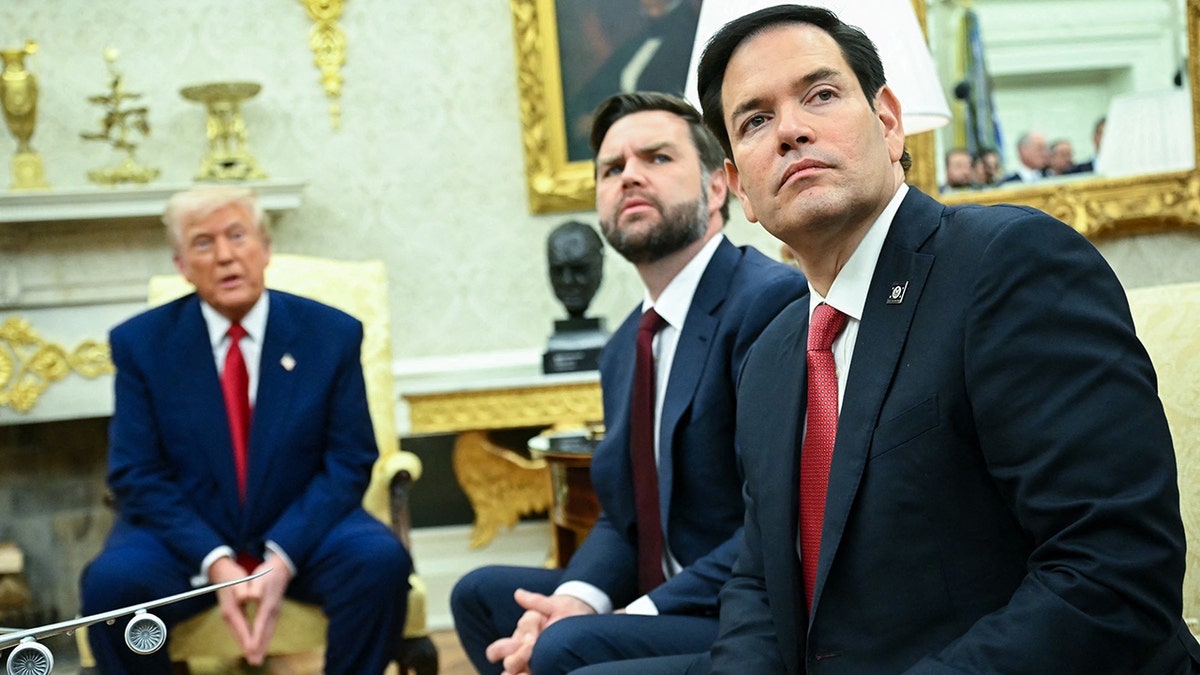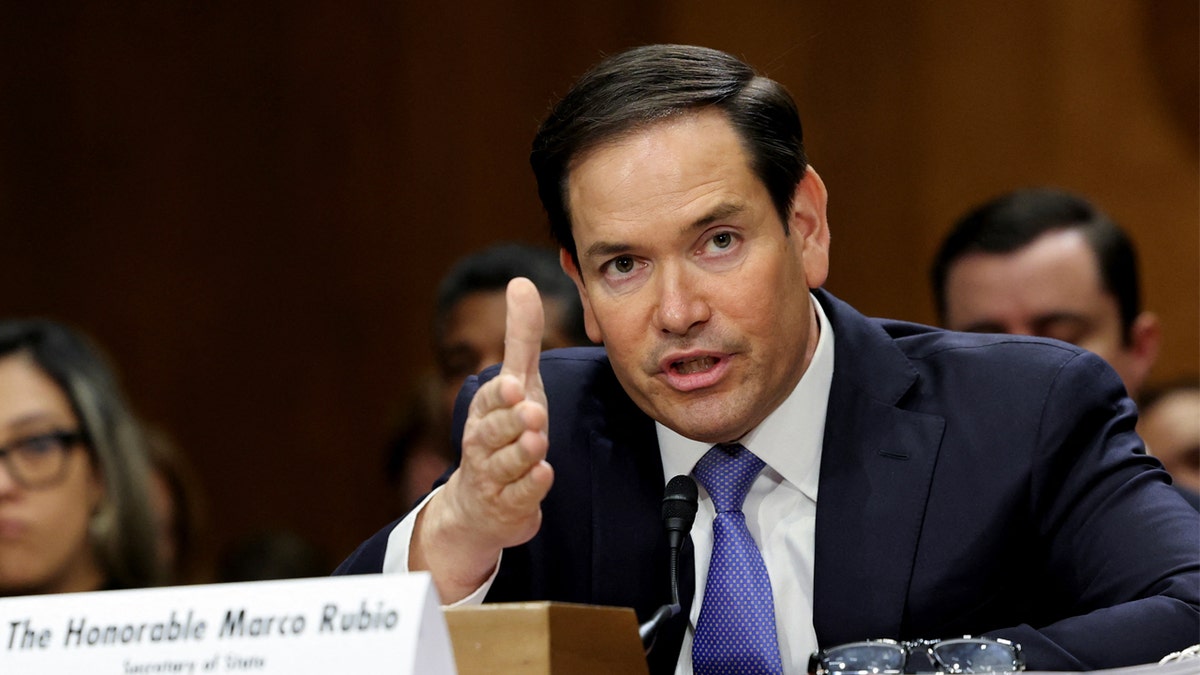FIRST ON FOX: New State Department reorganization plans will cut or consolidate more than 300 of the agency’s offices and bureaus as part of a massive overhaul seeking to streamline the department, according to agency officials.
Secretary of State Marco Rubio first announced plans in April to restructure the agency because the department was “bloated, bureaucratic, and unable to perform its essential diplomatic mission.”
The State Department submitted a notice to Congress Thursday disclosing plans for the overhaul — the largest restructuring for the agency since the Cold War, senior State Department officials told Fox News Digital.
The agency’s overhaul aims to cut red tape so the department can respond to threats more quickly, place greater emphasis on the agency’s “primary mission” representing the U.S. abroad and eliminate “bureaucratic overgrowth” in Washington, the congressional notice said.
“We have too many godd— offices,” a senior State Department official told Fox News Digital. “We’re trying to shrink offices rather than create them.”
RUBIO OVERHAULING ‘BLOATED’ STATE DEPARTMENT IN SWEEPING REFORM
President Donald Trump, left, Vice President JD Vance and Secretary of State Marco Rubio, right, look on during a meeting with Israeli Prime Minister Benjamin Netanyahu in the Oval Office of the White House in Washington, D.C., on April 7, 2025. (Saul Loeb/AFP via Getty Images)
The State Department’s plans will slash or merge 311 existing domestic offices, ultimately eliminating up to roughly 3,400 State Department personnel, who make up between 15% and 20% of the agency’s domestic headcount, according to State Department officials.
The agency currently boasts roughly 700 offices, meaning the reorganization will cut or join more than 40% of the offices.
“We are really addressing a significant portion of the department’s domestic offices and sort of merging them, combining them, trying to make them more efficient,” the senior State Department official said.
Staff have not received notifications regarding the reduction in force yet, but they are expected to receive an update on reductions in force by July 1.
Whereas three offices overseeing sanctions issues previously existed, the overhaul will merge all of those branches together to make it more clear who to report to, according to the official.
However, a few additions are in the works. The plans also include adding approximately nine new offices, the State Department officials said.
New positions include a deputy assistant secretary for democracy and Western values, as well as new immigration security offices under the agency’s bureau of population, refugees and migration to tackle President Donald Trump‘s immigration priorities.
Likewise, the restructuring adds a new bureau of emerging threats that will address issues pertaining to artificial intelligence, hypersonic weapons and space.
“So we’re not just cutting these things,” the senior State Department official said. “We’re re-imagining them to advance the administration’s agenda.”
The reorganization structure only affects domestic offices and also seeks to cut down on the layers of bureaucracy in Washington to give more power to the embassies abroad, according to State Department officials.
The State Department has domestic offices all across the U.S., ranging from the East Coast in Boston, all the way to San Francisco and Honolulu. The State Department has more than 270 diplomatic posts outside the U.S.
WHITE HOUSE PROPOSAL AXES UN, NATO FUNDS AND HALVES STATE DEPARTMENT BUDGET
Road sign showing the U.S. Embassy in Jerusalem. (Hillel Maeir/TPS)
The status quo hampered the department’s ability to push out policy because there were so many channels of approval that needed to be cleared first as part of a “horizontal reporting structure,” they said.
Under the new structure, regional bureau offices that handle global U.S. bilateral relationships will take on greater responsibility and oversee policy management of nearly all non-security foreign assistance, according to the congressional notice.
“We’re really shifting the focus towards our embassies out in the field, our ambassadors out in the field, giving them the tools … so that they can effectively implement the ‘America First’ diplomacy out there in the field,” another senior State Department official told Fox News Digital.
The officials said that Rubio has instructed that the new structure be implemented by July 1 and that the agency is so far on track to meet that goal.
Rubio told lawmakers on the Senate Appropriations Subcommittee overseeing foreign affairs on May 20 that the restructuring “is not designed to either cripple the department or in any way — it’s not even a cost-savings endeavor.”
Rather, Rubio said the change aims to “empower” regional bureaus and embassies. Specifically, Rubio said that he receives up to 15 cables each morning from embassies around the world and that’s where the “best innovations” originate.
TRUMP ADMIN TO DIRECT AGENCY HEADS TO PREP FOR ‘LARGE-SCALE REDUCTIONS IN FORCE,’ REORGANIZATION BY MARCH 13
Secretary of State Marco Rubio testifies at a Senate Foreign Relations Committee hearing on Capitol Hill in Washington, D.C., May 20, 2025. (Jonathan Ernst/Reuters)
“They are identifying problems and opportunities well in advance of some memo that works its way to me,” Rubio told lawmakers. “We want to get back to a situation or we want to get to a situation where we are empowering ideas and action at the embassy level and through our regional bureaus. Those are literally the front lines of American diplomacy. And so we have structured a State Department that can deliver on that.”
Meanwhile, ranking member of the Senate Foreign Relations Committee Sen. Jeanne Shaheen, D-N.H., voiced caution about the reforms in April after Rubio’s initial announcement and said any changes “must be carefully weighed with the real costs to American security and leadership.”
“A strong and mission-ready State Department advances American national security interests, opens up new markets for American workers and companies and promotes global peace and stability,” Shaheen said in her April statement. “It remains to be seen how the administration’s latest proposals will achieve that goal.”
Diana Stancy is a politics reporter with Fox News Digital covering the White House.

 Entertainment8 years ago
Entertainment8 years ago
 Gym & Fitness4 weeks ago
Gym & Fitness4 weeks ago
 Gym & Fitness4 weeks ago
Gym & Fitness4 weeks ago
 Gym & Fitness6 days ago
Gym & Fitness6 days ago
 Politics8 years ago
Politics8 years ago
 Gym & Fitness2 weeks ago
Gym & Fitness2 weeks ago
 Gym & Fitness4 weeks ago
Gym & Fitness4 weeks ago
 Gym & Fitness4 weeks ago
Gym & Fitness4 weeks ago





















